Input interpretation

menthofuran
Chemical names and formulas
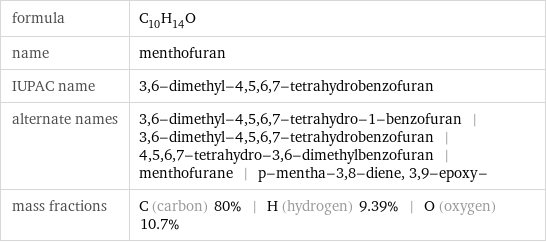
formula | C_10H_14O name | menthofuran IUPAC name | 3, 6-dimethyl-4, 5, 6, 7-tetrahydrobenzofuran alternate names | 3, 6-dimethyl-4, 5, 6, 7-tetrahydro-1-benzofuran | 3, 6-dimethyl-4, 5, 6, 7-tetrahydrobenzofuran | 4, 5, 6, 7-tetrahydro-3, 6-dimethylbenzofuran | menthofurane | p-mentha-3, 8-diene, 3, 9-epoxy- mass fractions | C (carbon) 80% | H (hydrogen) 9.39% | O (oxygen) 10.7%
Lewis structure
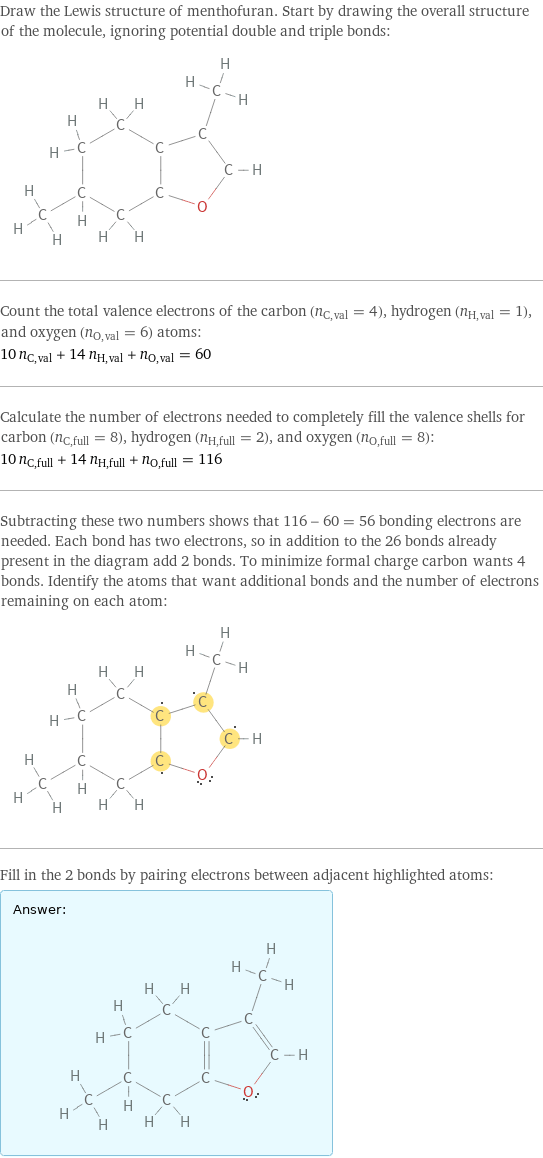
Draw the Lewis structure of menthofuran. Start by drawing the overall structure of the molecule, ignoring potential double and triple bonds: Count the total valence electrons of the carbon (n_C, val = 4), hydrogen (n_H, val = 1), and oxygen (n_O, val = 6) atoms: 10 n_C, val + 14 n_H, val + n_O, val = 60 Calculate the number of electrons needed to completely fill the valence shells for carbon (n_C, full = 8), hydrogen (n_H, full = 2), and oxygen (n_O, full = 8): 10 n_C, full + 14 n_H, full + n_O, full = 116 Subtracting these two numbers shows that 116 - 60 = 56 bonding electrons are needed. Each bond has two electrons, so in addition to the 26 bonds already present in the diagram add 2 bonds. To minimize formal charge carbon wants 4 bonds. Identify the atoms that want additional bonds and the number of electrons remaining on each atom: Fill in the 2 bonds by pairing electrons between adjacent highlighted atoms: Answer: | |
3D structure
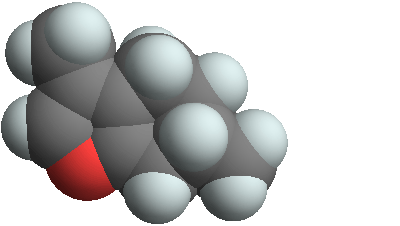
3D structure
Basic properties
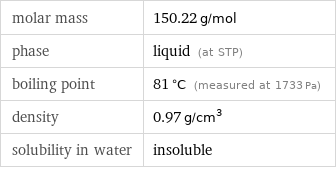
molar mass | 150.22 g/mol phase | liquid (at STP) boiling point | 81 °C (measured at 1733 Pa) density | 0.97 g/cm^3 solubility in water | insoluble
Units

Liquid properties (at STP)

density | 0.97 g/cm^3 vapor pressure | 0.3 mmHg (at 25 °C) refractive index | 1.485
Units

Thermodynamic properties

molar heat of vaporization | 42.9 kJ/mol specific heat of vaporization | 0.2856 kJ/g (at STP)
Chemical identifiers
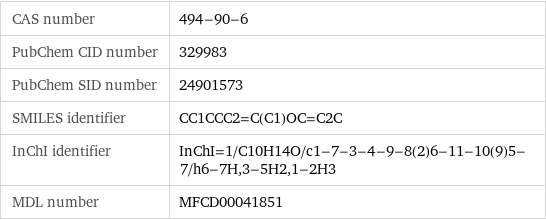
CAS number | 494-90-6 PubChem CID number | 329983 PubChem SID number | 24901573 SMILES identifier | CC1CCC2=C(C1)OC=C2C InChI identifier | InChI=1/C10H14O/c1-7-3-4-9-8(2)6-11-10(9)5-7/h6-7H, 3-5H2, 1-2H3 MDL number | MFCD00041851
NFPA label

NFPA label
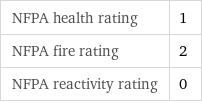
NFPA health rating | 1 NFPA fire rating | 2 NFPA reactivity rating | 0
Safety properties

flash point | 75.56 °C